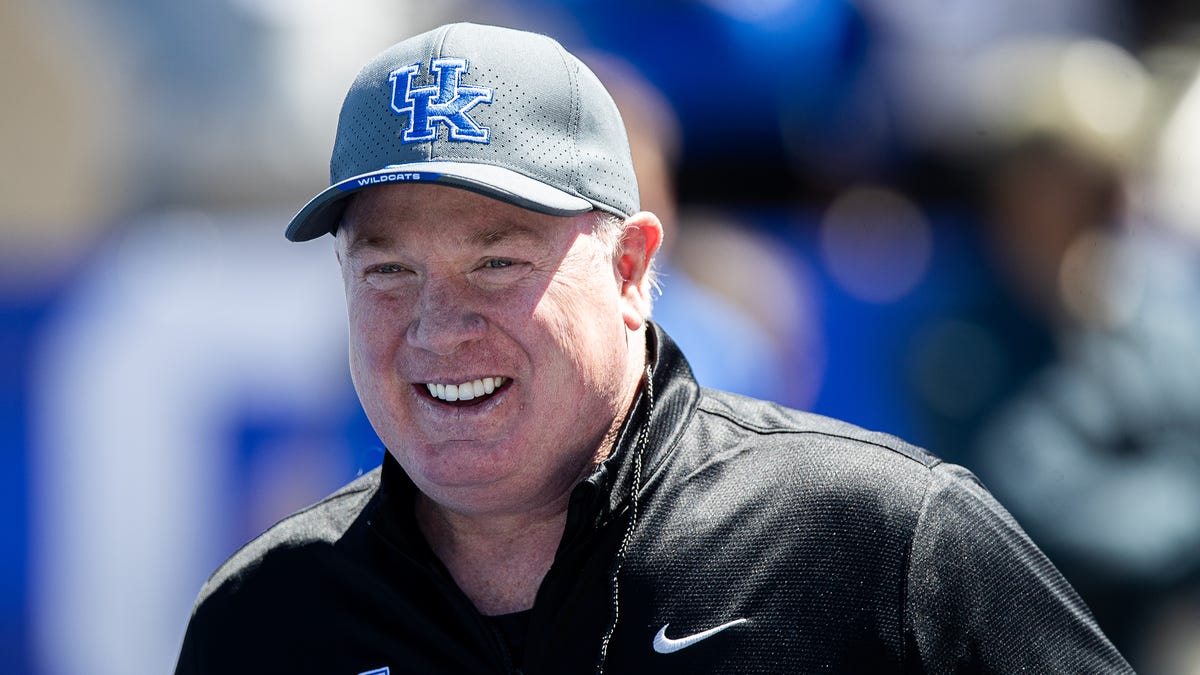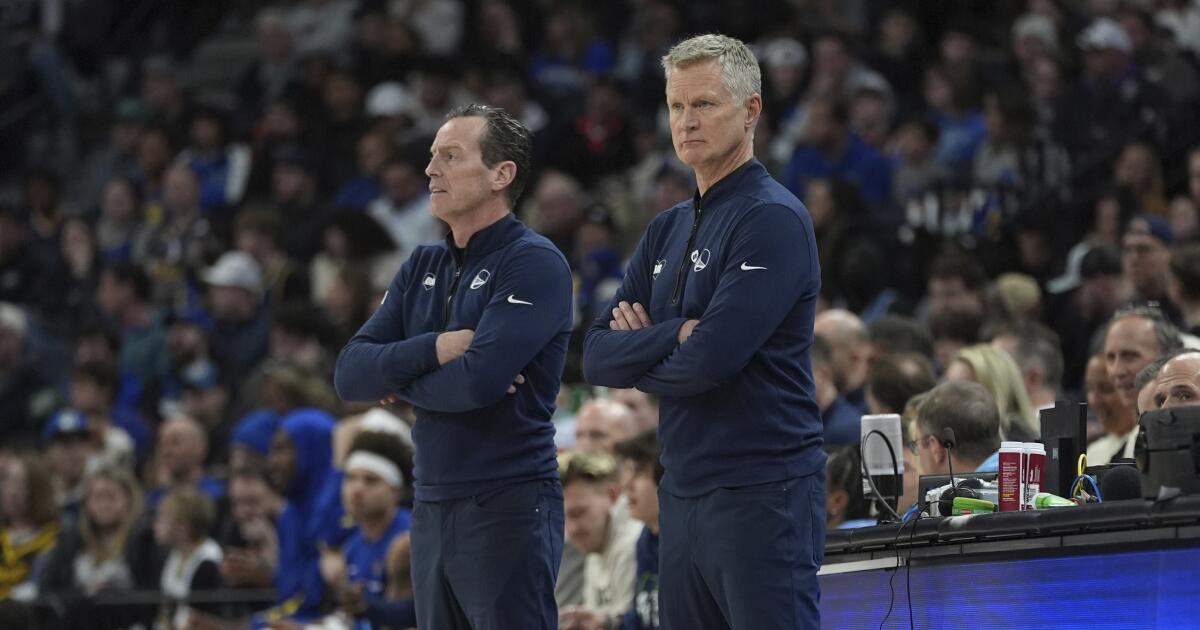We blinked our eyes and the end of May is already here. That means recruiting season is heating up with summer visits right around the corner.
Here are some recruiting thoughts:
• We got into a discussion about transactional programs on last Friday’s episode of “Until Saturday.” It led us down a path to Florida State, a team that has been very active — and successful — in the transfer portal. Mike Norvell has not signed a top-10 recruiting class during his time in Tallahassee, yet he had his team competing for a national championship a year ago. And had Jordan Travis not gotten injured, the Seminoles could have won the title. This has me thinking: Are the high school recruiting rankings just not as important anymore? Or was Florida State just outrageously (and unsustainably) successful in the portal? Was last year an outlier or the beginning of a new talent accumulation trend?
• Who were the best players on Florida State’s roster last year? Travis, receivers Keon Coleman and Johnny Wilson, running back Trey Benson, defensive end Jared Verse and a handful of others. Every one of them was a transfer. That, to me, makes Norvell the portal king. It’s not so much about the number of transfers, it’s about how many came in and produced like future NFL players. It was wildly successful, but I’m skeptical a team can consistently do that year after year, even if Florida State regularly takes transfers with multiple seasons of eligibility remaining.
• That brings me to the next point about Florida State and other “transactional” programs. At what point do you pull the lever and start going all-in on high school classes? Florida State’s recruiting ranking has improved each year under Norvell’s leadership, from No. 23 in the 2021 cycle in the 247Sports Composite to No. 12 in 2024. As success happens on the field, high school prospects begin to look at your program in a different light. Though it is always prudent to use the portal as a supplement, I still firmly believe that focusing on high school recruiting is required to sustain success.
• Florida State is no stranger to elite-level recruiting, but I was shocked to learn that the Seminoles haven’t signed a top-10 class since the 2017 cycle. People view Norvell as a top-five coach in America right now. This cycle is huge for Florida State to prove that this program actually is back as a power. I want to see a top-10 class from the Seminoles in 2025.
• Nick Saban is gone from Alabama. He was a menace in the state of Florida during his time with the Crimson Tide. He’d regularly dip into the Sunshine State and land the five-star prospects who would have gone to Florida State, Florida or Miami 15 years ago. This is an absolutely huge cycle not only for the Seminoles but also for the Gators and Hurricanes. Take your state back.
• Florida’s 2024 class lost six players who ranked in the top 150 nationally between last November and the mid-December early signing period. The Gators held onto two five-star prospects in quarterback DJ Lagway and defensive lineman LJ McCray, but they saw the wheels fall off on a once-dominant class, which ultimately finished No. 13 overall. Yes, Florida did some work in the transfer portal by bringing in 15 players, including former Arizona State wide receiver Elijhah Badger and former Colorado cornerback Cormani McClain, but recruiting hasn’t quite hit the way we thought it would. Billy Napier is in a tough spot, too. Florida’s schedule this season is brutal, and many people assume he isn’t going to make it through the year. That makes it really hard to sign an elite-level recruiting class.
• Alabama’s 2025 class has 10 commitments, including three from top-100 national prospects. The Crimson Tide’s class ranks No. 8 overall. The good news? Kalen DeBoer and his staff are landing commitments from elite-level prospects. It’s certainly not at the same rate as Saban did, but it’s irrational to expect that right out of the gate. It’s not easy replacing the GOAT. I’m looking forward to seeing where this Alabama class ultimately ranks. It’s intriguing, especially for those of us who debate whether Alabama is a top-three job in America or if Saban just made it seem that way. We’re going to find out. I’d give DeBoer, a coach who has never had to recruit at an elite level, a passing grade thus far.
• Ohio State has had a stranglehold on the state of Ohio for more than a decade. On occasion, a team will come into the state and land a player with an Ohio State offer, but it doesn’t happen often. But what happens when Georgia makes a run in the Buckeye State? The Bulldogs landed four-star quarterback Ryan Montgomery of Findlay High last month, though it must be noted that Ohio State already has a QB committed in the 2025 class (Tavien St. Clair of Bellefontaine High). But Georgia hosted five-star cornerback Trey McNutt of Shaker Heights High and top-100 running back Bo Jackson of Cleveland Villa Angela-St. Joseph last weekend, and the Bulldogs now seem to be in a great position with those players. It would be a noteworthy development if Georgia is able to snatch some top-end talent away from Ohio State.
• Five-star cornerback Dijon Lee of Mission Viejo (Calif.) High released a top four Thursday that consisted of Alabama, Georgia, Washington and Texas A&M. There is one school from Southern California that was notably absent from this list. USC is off to a solid start in the 2025 cycle, with five top-100 players committed, including five-star quarterback Julian “JuJu” Lewis of Carrollton (Ga.) High, but the Trojans have to find a way to land five-star defenders in their backyard. USC got smoked in the state of California a year ago, and while Lincoln Riley has made a few national splashes this cycle, there still seems to be something off there. Three of the top six players in California have already issued commitments — none to USC. Lee is also now seemingly out of the picture, too.
• Notre Dame currently ranks No. 1 overall in the recruiting rankings, which seems to be a trend for the Irish. The class, as it is constructed now with 21 commitments, probably won’t finish in the top five. It’s a solid class, like all of Notre Dame’s classes, but I have yet to see the Marcus Freeman difference in high school recruiting. I think Notre Dame has a good chance to go undefeated this year because it has an elite defense and a veteran roster and it made some key portal additions. Maybe that’s the plan for Notre Dame. I was just hoping to see an influx of five-stars under Freeman’s leadership, and that just hasn’t happened.
• The top 16 players in the state of Texas all rank in the top 90 nationally. Only four have issued commitments. So even though we’re heading into the summer months and things are about to get hectic, there are so many important prospects in the Lone Star State who have yet to pop. Texas’ recruiting class ranks No. 23 overall, which means absolutely nothing when basically its entire state is still uncommitted. It’ll also be interesting to see how much Texas A&M moves the needle in the second half of this cycle under first-year head coach Mike Elko.
• Michigan has five commitments in the 2025 cycle, and two of them pledged before Jim Harbaugh left. There is very little on which to evaluate first-year head coach Sherrone Moore. Along with how Alabama looks in the post-Saban era, monitoring Michigan’s recruiting operation under new leadership will be fascinating. That’s especially true considering the state of Michigan has only one player ranked in the top 200 in this cycle, and that’s five-star quarterback and LSU commitment Bryce Underwood. What is the Wolverines’ strategy for this cycle and beyond?
• Clemson is the only Power 4 team that didn’t take a transfer in this year’s cycle. It infuriates me because I’ve been watching Dabo Swinney’s stubbornness torpedo the Clemson program for the past two years. When Dan Wetzel of Yahoo! Sports came on “Until Saturday” a few weeks ago, he said it best: What Swinney is trying to do at Clemson is admirable. You hear what he is saying and you want to believe it. He wants to do right by his guys and that’s heartwarming. But that’s not how you win big in 2024. The more stubborn Swinney is when it comes to figuring out how to enhance his roster, the further back the Tigers are going to keep falling.
GO DEEPER
Recruiting mailbag: Making sense of Dabo’s strategy, early thoughts on Syracuse, UCLA
• I bring up the Clemson portal stuff because the Tigers always recruit solid, well-evaluated classes. So far in 2025, Clemson has five top-100 players committed. You trust Clemson’s evaluations and decisions. I think Swinney, in theory, would be open to taking more transfers if the bidding-war element didn’t exist or if players weren’t already locked up before entering the portal. I truly understand why he is hesitant. But Clemson has to figure out a way to supplement its roster to go along with its solid recruiting classes if it wants to dream about winning a national title ever again.
• Colorado has three commitments, none of whom rank in the top 200 nationally. We’ve spent a lot of time discussing the Buffaloes’ plan, but I’ll bluntly say it again: Deion Sanders is not capitalizing on his No. 1 qualification for being a head coach — fame! — enough in the pursuit of high school athletes. We’re only halfway through the cycle so there is still time to turn things around. But nothing that has happened around that program makes me believe he’ll be the head coach in Boulder in two years.
• Oregon has seven commitments this cycle. All of those players are ranked in the top 300 nationally, and three are in the top 100. It’s still an ongoing case study in terms of where your classes need to be ranked to win a national title in this new era of college football, but the Ducks strike me as a dangerous program. They do a really good job signing deep and talented recruiting classes, and they supplement their roster with high-end portal pickups like Evan Stewart and Dillon Gabriel. Three years ago I would have said Oregon will never win a national title by recruiting good but not great classes. Now I’d buy stock in them and hold. Dan Lanning hasn’t won big on the field yet, but I get the sense it’s coming. And soon.
(Photo of Mike Norvell: Charles LeClaire / USA Today)
 The Coastal Conservation Association Georgia, a CRD partner, provided financial support to make the reef deployments possible. Members of the public can also show their support for artificial reef creation by purchasing the “Support Fish Habitat” license plate (Code “NR”) at their local tag office. This eye-catching tag features the state saltwater fish, the red drum, and costs just $25 more annually than a standard tag.
The Coastal Conservation Association Georgia, a CRD partner, provided financial support to make the reef deployments possible. Members of the public can also show their support for artificial reef creation by purchasing the “Support Fish Habitat” license plate (Code “NR”) at their local tag office. This eye-catching tag features the state saltwater fish, the red drum, and costs just $25 more annually than a standard tag.
































